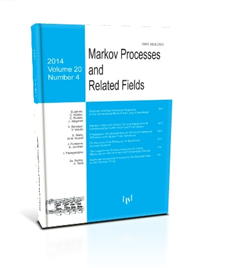High-Dimensional Random Fields and Random Matrix Theory
Y.V. Fyodorov
2015, v.21, Issue 3, 483-518
ABSTRACT
Our goal is to discuss in detail the calculation of the mean number of stationary points and minima for random isotropic Gaussian fields on a sphere as well as for stationary Gaussian random fields in a background parabolic confinement. After developing the general formalism based on the high-dimensional
Kac\tire Rice formulae we combine it with the Random Matrix Theory (RMT) techniques to perform analysis of the random energy landscape of $p$-spin spherical spinglasses and a related glass model, both displaying a zero-temperature one-step replica symmetry breaking glass transition as a function of control parameters (e.g.\ a magnetic field or curvature of the confining potential). A particular emphasis of the presented analysis is on understanding in detail the picture of ``topology trivialization" (in the sense of drastic reduction of the number of stationary points) of the landscape which takes place in the vicinity of the zero-temperature glass transition in both models. We will reveal the important role of the GOE ``edge scaling" spectral region and the
Tracy\tire Widom distribution of the maximal eigenvalue of GOE matrices for providing an accurate quantitative description of the universal features of the topology trivialization scenario.
Keywords: Gaussian random fields, random matrices, Kac\tire Rice formula, spin glasses
COMMENTS
Please log in or register to leave a comment

